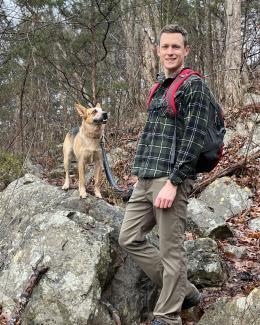Abstract
Peat mosses (Sphagnum spp.) are keystone species in boreal peatlands, where they dominate net primary productivity and facilitate the accumulation of carbon in thick peat deposits. Sphagnum mosses harbor a diverse assemblage of microbial partners, including N2-fixing (diazotrophic) and CH4-oxidizing (methanotrophic) taxa that support ecosystem function by regulating transformations of carbon and nitrogen. Here, we investigate the response of the Sphagnum phytobiome (plant + constituent microbiome + environment) to a gradient of experimental warming (+0°C to +9°C) and elevated CO2 (+500 ppm) in an ombrotrophic peatland in northern Minnesota (USA). By tracking changes in carbon (CH4, CO2) and nitrogen (NH4-N) cycling from the belowground environment up to Sphagnum and its associated microbiome, we identified a series of cascading impacts to the Sphagnum phytobiome triggered by warming and elevated CO2. Under ambient CO2, warming increased plant-available NH4-N in surface peat, excess N accumulated in Sphagnum tissue, and N2 fixation activity decreased. Elevated CO2 offset the effects of warming, disrupting the accumulation of N in peat and Sphagnum tissue. Methane concentrations in porewater increased with warming irrespective of CO2 treatment, resulting in a ~10× rise in methanotrophic activity within Sphagnum from the +9°C enclosures. Warming's divergent impacts on diazotrophy and methanotrophy caused these processes to become decoupled at warmer temperatures, as evidenced by declining rates of methane-induced N2 fixation and significant losses of keystone microbial taxa. In addition to changes in the Sphagnum microbiome, we observed ~94% mortality of Sphagnum between the +0°C and +9°C treatments, possibly due to the interactive effects of warming on N-availability and competition from vascular plant species. Collectively, these results highlight the vulnerability of the Sphagnum phytobiome to rising temperatures and atmospheric CO2 concentrations, with significant implications for carbon and nitrogen cycling in boreal peatlands.






